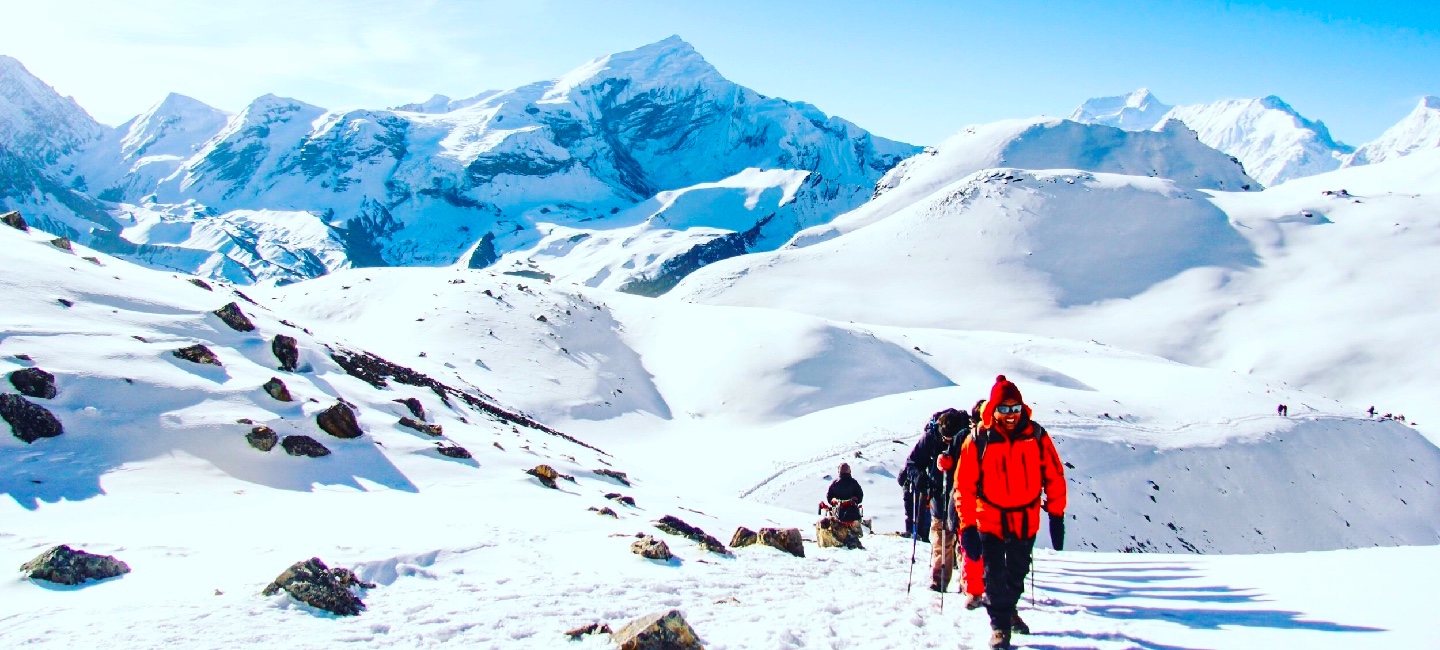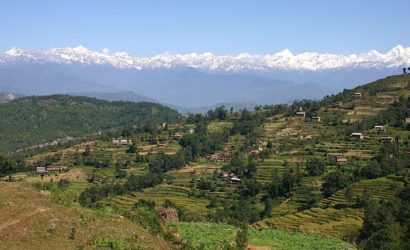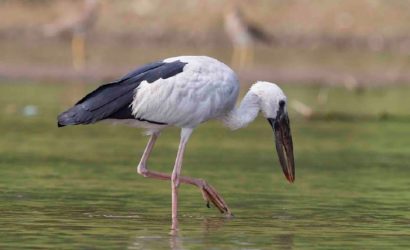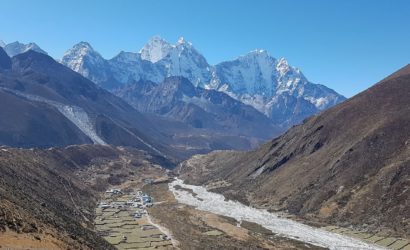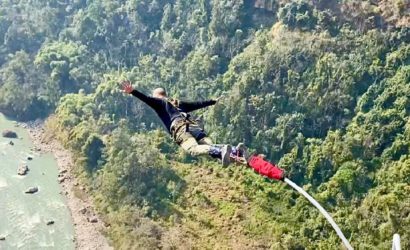Climb the Chulu West Peak (6419 meters / 21,055ft) and make your dream of peak climbing in one of world’s most beautiful regions (the Annapurna) come true.
There are two Chulu Peaks, East and West and this package is for the Chulu West Peak Climbing. Standing at a height of 6419 meters, the Chulu West Peak offers itself as an interesting peak climbing opportunity for those looking for an adventure in the Annapurna Region.
There is considerable confusion about the name and location of the Chulu peaks and what summit actually constitutes Chulu West and Chulu East, as it soon becomes obvious to anyone who has climbed in the range that several other nearby summits, which are actually part of the Chulu massif, are not shown on present maps of the area.
Some consider the Chulu West peak is one of the best peaks in the Annapurna region. While climbing, you will also be able to enjoy magnificent views of Dhaulagiri, Nilgiri, Annapurna, among other Himalaya peaks. However, climbing the Chulu West Peak requires a good physical condition and a high degree of stamina.
Chulu West Climbing Route and Trail Conditions
After initial preparations and sightseeing in Kathmandu, we drive to Khudi from where we begin our trek. The trail leads slowly to the Manang Valley, one of the highest valleys of the world.
We set up two camps above the base camp. After summiting the Chulu West, we return via the Thorong-La Pass and Muktinath to Jomsom. From Jomsom, flight / drive to Pokhara and drive back to Kathmandu.
In a small valley to the north, the obvious approach to this peak diverges from the main trail to the Thorong La Pass past Manang village and Base Camp. The route follows a subsidiary North-West ridge from the base camp, which leads to the main peak.
An attempt at the peak and return has been made in one day as it is not easy to set up camp on the slope above the base camp.
Upon your arrival in the Kathmandu airport after completing your custom formalities Visa, etc. pick up your luggage and look for our airport representative from Himalaya Discovery, who will display your name on the board at the arrival gate.
You will be greeted by our representative and transferred to your hotel, overnight in Kathmandu.
Today is free for sightseeing in Kathmandu. You may wish to visit Durbar Square in the heart of the old city where the old Royal Palace, with its intricate woodcarving is located. The whole area is a maze of temples and images. Leading away from the square in all directions are narrow alleys, full of the most amazing variety of shops and stalls.
Some of these landmarks are considered World Heritage Sites including the historic Bhaktapur Durbar Square, the famous ‘Monkey Temple’ Swayambhunath and Buddhists shrine Buddhanath which is one of the largest Stupas in the world.
There will also be a full trip briefing today with gear check. In case you need to hire or buy equipment locally there will be time to do this today. Overnight at hotel in Kathmandu.
Trekking staff will arrive at your hotel at 7.00 am in the morning to pick you up.
We have 8 hours of driving to Bhulbhule via Besisahar. It is about 200 km from Kathmandu. On arrival at Bhulbhule you will witness stunning snow capped mountain scenery. Overnight at guesthouse.
Today our journey starts at Bhulbhule, the first Gurung village (many of Nepal’s Gurkha Soldiers are Gurungs).
As we continue the trail offers fine views of Himalchuli and Peak 29 (Ngadi Chuli) it then goes to Ngadi before reaching Lampata at 1135 meters and nearby Bahundanda at 1310 meters. Overnight at guesthouse.
Today the trail drops steeply to Syange at 1070 meters from Bahundanda crossing the Marsyangdi River on a suspension bridge.
We then follow the river to the stone village of Jagat before climbing through forest to Chamje at 1400 meters. Overnight at guesthouse.
The day begins with the rocky trail following the Marsyangdi Rivers steadily uphill to Tal at 1675 meters, the first village in the Manang district. We make a trailverse crossing a wide, flat valley.
The trail then climbs a stone stairway to 1860 meters till another stairway. The journey continues making up and down to Dharapani at 1890 meters. There we find a stone entrance chorten typical of the Tibetan influenced villages from here northwards.
We then visit the Bagarchhap at 2160 meters that offers the typical flat roofed stone houses of local Tibetans design although the village which is still in the transition Zone before the dry highlands. Overnight at guesthouse.
With often rough and rocky, the trail climbs to Tyanja at 2360 meters, & then continues through forest, but near the river, to Kopar at 2590 meters.
As we reach the Chame, the headquarters of the Manang district, we are rewarded by the fine views of Annapurna II as you approach Chame & two small hot springs by the town. Overnight at guesthouse.
The day starts through deep forest in a steep and narrow valley, crosses a river on a long bridge at 2910 meters.
We then cross another bridge at 3040 meters, from there the view of the soaring Paungda Danda rock face really begins to appear.
From there the trail joins to climb to Pisang, which sprawls between 3200 meters & 3300 meters. Overnight at guesthouse.
Today, we continue through the drier upper part of the Manang district, cut off from the full effect of the monsoon by the Annapurna range.
People of this region, herd yaks & raise crops for part of the year besides, they also continue to enjoy special trading rights gained way back in 1784.
Leaving Pisang, we have an alternate trails north and south of the Marsyangdi River which meet up again at Mungji.
The southern route by Hongde, with its airstrip, at 3325 meters involves less climbing than the northern route via Ghyaru, though there are better views on the trail that follows the northern bank of the river.
From Mungji, the trail continues past the picturesque but partially hidden village of Braga at 3475 meters to nearby Manang at 3500 meters. Overnight at guesthouse.
Today, we spend a day acclimatizing in Manang. The whole day we spend by doing some fine day walks and overviewing the magnificent views around the village & the day time is best to gain altitude.
At the end of the day, we return back to our accommodation & have a night rest. Overnight at guesthouse.
From Manang, we continue through alpine landscapes with high altitude vegetation and forests. A gradual ascent takes us to Yak Kharka and then to our today’s camp.
Our today’s camp area is most used as the alpine pasture by the local people. Overnight at guesthouse.
Today, we continue our trekking from Leder to Chulu West Base Camp. From the Base Camp, you can enjoy the views of Annapurna Himalayas. You may also like to discover the surrounding areas. Here we will set up our camp Overnight at Tented camp.
From the Chulu Base Camp, we continue hiking towards Camp I. The route is not that technical. But it’d be better to remember that we’re climbing on high altitudes.
Enjoy the magnificent views of Annapurna and Dhaulagiri mountains including Manaslu, Gangapurna and Lamjung Himal. (B,L,D)
Rest & acclimatization at Camp I. While clients rest at camp I, the climbing leaders and other staff make way to Camp II and supply the equipments to Camp II.
Later, they return back to Camp I. You may rest and if interested walk around Camp I. Overnight at Tented camp.
Today, we leave camp I and continue climbing the rock band to Camp II. The route is not that technical but we may have to use ropes, crampon, and ice-axe.
We set up Camp II at 5,530 meters / 18,143ft. Some people also attempt the summit directly from Camp I. However, since the climb is relatively straightforward from the Camp II until the summit, we make an overnight stay at Camp II for proper rest and acclimatization.
It’s our summit day today, and it’s going to be long day. Therefore, we would wake up much earlier today. Each moment we have to work hard today through the icy high-altitude trail but the outstanding high Himalayan scenes are such tempting that our eyes love to watch more over the horizon than on our trail. After summiting, we return back to Camp I.
From Camp I, our return path descends all the way to Leder. While descending, enjoy the panoramic views of the Annapurnas and other peaks.
We make our overnight stay at Leder and celebrate the summiting of Chulu West Peak. Overnight at guesthouse.
Today, the trail descends to cross the river at 4310 meters we then climb up to Thorong Phedi at 4450 meters where we have recently found some good guesthouses built. Our overnight stay will be there, overnight at guesthouse.
Today is a long trek starting before sunrise at 4 am to reach the pass by 9-10 am otherwise weather conditions will greatly affect the journey. We cross over at an altitude of 5416 meters we can be exposed to strong winds if crossing too late.
We start to climb steeply that is regularly used and easy to follow. However, the problem may arise due to the altitude and snow. It often causes terrible problems to cross the pass if it is covered by snow.
About four hours climb up to the pass marked by the chortens & prayer flags. As you reach the top, you are rewarded by the magnificent view from the top with another 4 hours trek will take to the holy town of Muktinath.
Muktinath means place of Nirvana and is home to the Muktinath temple as well as several monasteries. It is said that all sorrows you feel are relieved when visiting the Temple, which is a sacred pilgrimage site to both Hindus and Buddhists.
The main pilgrimage normally takes place in September. The Temple is dedicated to Lord Vishnu and has 108 waterspouts around it from which Holy water pours.
Another attraction nearby is the Jwala Mai Temple this contains a spring and an eternal flame fed by natural underground gas, Overnight at guesthouse.
Our descent continues through the Kali Gandaki Valley to Jomsom, which is also headquarter for whole Mustang district and is home to many apple orchards as well as all the various food products made from the fruit.
Apple Brandy is a local specialty that you may be lucky enough to taste en route, Overnight at guesthouse.
Once we arrived at Pokhara airport, then transfer to hotel. Today is free and relax day. Overnight at hotel in Pokhara.
We depart at approximately 7.30am for Kathmandu by tourist bus. We arrive back in Kathmandu at around 2-3.00 pm. Overnight in Kathmandu.
Today is rest and relax throughout the day. If you get interested to take some gifts from Nepal for friends and relatives, visit to some nearby shops or go out in Thamel for typical Nepalese goods.
In the evening we will have a farewell dinner in a traditional Nepalese restaurant with cultural performances. Overnight at hotel in Kathmandu.
The trip concludes, our airport representative will drop you to the airport for your flight departure from Nepal.

